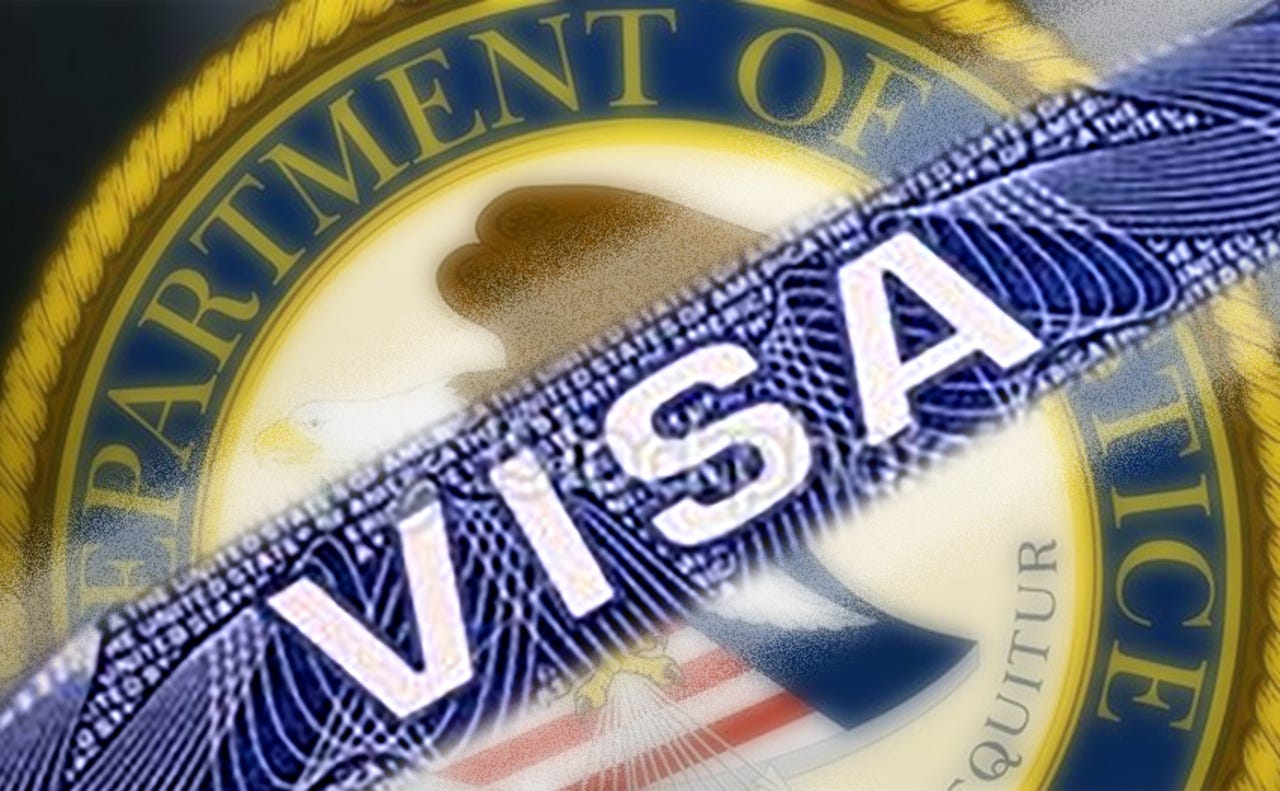In further onslaught against H-1Bs, DOJ warns of site visits, opens fraud hotline


American tech workers are no doubt feeling vindicated, rejoicing at what they feel is a long-overdue, reversal of fortunes.
You could not have a more ominous beginning to the beginning of the H-1B lottery than the events that transpired over the last few days.
As ZDNet's Stephanie Condon reports, on Friday last week, the US Citizenship and Immigration Services (USCIS) issued a memo that revamped an outdated, 17-year rule book on the H-1B visa for specialty occupations, calling it "obsolete," adding that it "does not properly explain or distinguish an entry-level position from one that is, for example, more senior, complex, specialized, or unique." The reconfigured rules will now most certainly deem an entry-level computer programmer persona non grata as an applicant for an H-1B visa.
Today, USCIS and the Department of Justice (DOJ) upped the ante against what it considers theft of American jobs by companies that game the system by announcing that they would begin making roving site visits across the length and breadth of the US to monitor both H-1B petitioners as well as worksites of H-1B employees in a continued effort to stymie fraud in the system.
The USCIS listed three target areas for site visits: H-1B dependent employers, or companies that have 15 percent of their US workforce on the visa; Employers that have H-1B employees who work offsite at another company's location; Companies that do not have readily available information that the USCIS cannot verify or validate through "commercially available data."
The website took pains to allay the fears of companies being inspected by stressing that "these site visits are not meant to target nonimmigrant employees for any kind of criminal or administrative action but rather to identify employers who are abusing the system."
The DOJ urged people to call a hotline if they witnessed discrimination of US workers on the basis of their nationality. These new anti-fraud measures also included a publicized email address on the USCIS website that would allow "individuals (including both American workers and H-1B workers who suspect they or others may be the victim of H-1B fraud or abuse) to submit tips, alleged violations and other relevant information about potential H-1B fraud or abuse."
As these notifications unfurled, mountains of applications ferried by convoys of trucks made their way to the government processing center in California in an annual ritual cum spectacle today, which the New York Times vividly describes in this piece. The sheer volume of applications --some 240,000 last year for just 65,000 H-1B visas for those with a bachelor's degree and 20,000 more for those with master's degree or higher -- has now required an army of some 1,400 people to sift through and process the applications.
Many were surprised that the Trump administration allowed the H-1B lottery to go ahead as planned without any tweaking on the number of visas available or the process via an executive order as per his campaign promises. Clearly, these anti-fraud measures are essentially meant to replicate elements contained in a draft of an executive order that had leaked in January but has not yet been introduced.
Americans working in the tech sector would be gratified to see these changes -- they have long bemoaned being undercut and sidelined by American companies who seek cheap tech labour for their more mundane requirements such as infrastructure maintenance and application development as well as by Indian outsourcing companies who have gamed the H-1B visa lottery system to snag these jobs, which I wrote about here. Both will have to figure out their options in this brave new world.
Meanwhile, the National Association of Software and Services Companies (NASSCOM), the chief industry body for Indian IT companies stood by its oft-proclaimed position: "The H-1B visa system exists specifically because the US has a persistent shortage of high-skilled IT talent," it said, stating that the new rules would have minimal impact. "It is aimed at screening out less-qualified workers, whereas our members tend to provide well-credentialed workers to help U.S. companies fill their skills gaps and compete globally," it added.
What is at stake is a revenue spigot of $80 billion accruing to Indian IT, and while it is difficult to imagine, for obvious trade-related reasons, that Indian companies will be completely shut out of tech work in the US, they will be fervently hoping that their industry body is more right than wrong.
American companies, meanwhile, may be fuming at the prospect of now having to fork out substantially larger salaries to American tech workers who may not be willing to work the kind of hours their Indian counterparts do for substantially lower -- some say, sweat-shop like -- wages.
American tech workers are no doubt feeling vindicated, rejoicing at what they feel is a long-overdue, reversal of fortunes. Still, technology is a slippery, elusive beast, allowing for all kinds of different business models to morph and supplant traditional ones.
Indian IT demonstrated this some 15 years ago with its global delivery paradigm, and they just may do so again considering they will always have cost-cutting, willing customers in the US who are devoted to their bottom lines, quarterly earnings results, and consequently, their share prices.
VIDEO: Trump may bring jobs back to the US, but robots will get them